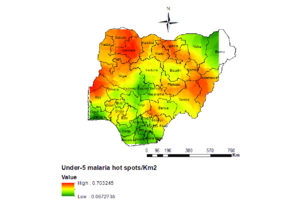This past Saturday I rode my bicycle 13 kilometers out to the Michiru Nature Reserve, located on the edge of Blantyre. Though I love the ride (see The Journey), my goal was hiking. There are several trails and I enjoy walking through the beautiful green forest, exercising my body and clearing my mind for the week ahead. On a typical visit I see one or two groups of baboons, large primates that take little notice of me. If they are on the trail, as I approach they will slowly move to the side. I pass 2 meters from them and the look they give me is one of boredom. Some weeks I see guinea fowl, their bright blue necks and heads making me smile. This weekend’s entertainment was monkeys.
No wonder I love seeing monkeys high up in the trees, moving through the canopy, keeping their awareness on the human interloper as he walks through the forest. After all, we are distant cousins.
Usually, the monkeys I see at Michiru are vervets (photo, left). They are small, herbivorous, and have blackfaces and light gray body hair. Vervets are common, small, shy, and live in groups of 10-70 animals. Unlike baboons, I never encounter them on the trail. They are always up in the forest canopy, watching me, making cries warning the rest of the group as I approach. I saw two separate troops of vervets on Michiru on Saturday. One troop had several babies, either clinging to their caretaker’s chest and abdomen or riding their back. Vervets, like many monkeys, participate in allomothering. There is where an individual who is not the biological mother, cares for the infant. Usually, allomothers are juvenile females who are not sexually mature. They care for the troop’s infants and learn parenting skills.
The third group of monkeys I saw this Saturday I had never before sighted. They were blue monkeys (photo, right). When I initially saw them, I immediately noticed their extremely long tails (longer than their bodies). Despite the name “blue” monkey, their bodies are dark gray with a black cap, feet, and front legs. Blue monkeys eat fruits, leaves, and rarely insects. Throughout their lives, female blue monkeys remain in the troop into which they were born. At adulthood, males move away. Blue monkeys also alloparent, with males occasionally taking over infant care duties.
Monkeys and humans share 98.8 percent of their genomes. (Interestingly, pigs and humans share 98 percent of their genomes. With birds, it is a much lower 60 percent.) No wonder I love seeing monkeys high up in the trees, moving through the canopy, keeping their awareness on the human interloper as he walks through the forest. After all, we are distant cousins.






